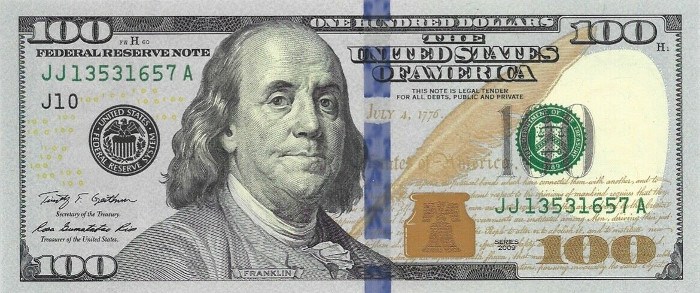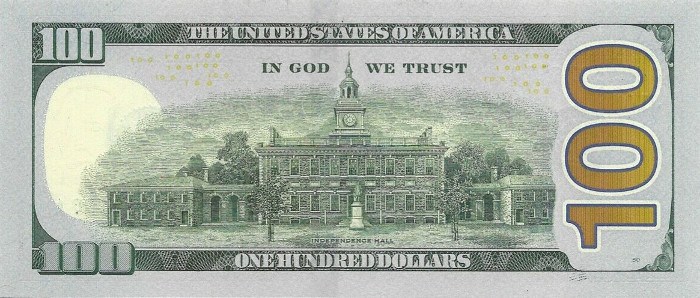Most 2009 one hundred dollar bills aren't valuable. However star notes can sell for more money. Continue reading to learn more about these bills.


Specifications
| Denomination: | $100.00 USD |
| Type: | Federal Reserve Note |
| Signature Varieties: | One: Geithner and Rios |
| Series: | Two: 2009, 2009A |
Security Features
The $100 bill was redesigned in 2009. Color was added and several different security features were also added in order to make these bills harder to counterfeit.
These new security features include: a 3D security ribbon, color-shifting ink, and microprinting. To learn more about these new security features, check out our article on how to tell if a 100 dollar bill is real.
Value
The standard bills in circulated condition won't be worth more than their face value of $100. They will only sell for a premium in uncirculated condition. Star notes can sell for higher prices.
Both the 2009 and 2009A series $100 bills are worth around $125 in uncirculated condition with a grade of MS 63.
Star Notes
Star notes are replacement bills that the United States Federal Reserve printed. These star notes are more rare. You can tell if you have a star note by looking to see if there is a star symbol at the end of the serial number.
The 2006 series $100 star notes are worth around $165-175 in uncirculated condition with an MS 63 grade. Star notes issued from the Federal Reserve Banks of Boston and Richmond are more valuable. Each note is worth around $200 in uncirculated condition with an MS 63 grade.
The 2006A series $100 star notes are worth around $150-175 in uncirculated condition with an MS 63 grade.
Grading System
MS 63 choice uncirculated- A note that shows no signs of ever having been in circulation. The note still has its original crispness. The note is also well-centered.
Sources:
A Guide Book of United States Paper Money
See also:
